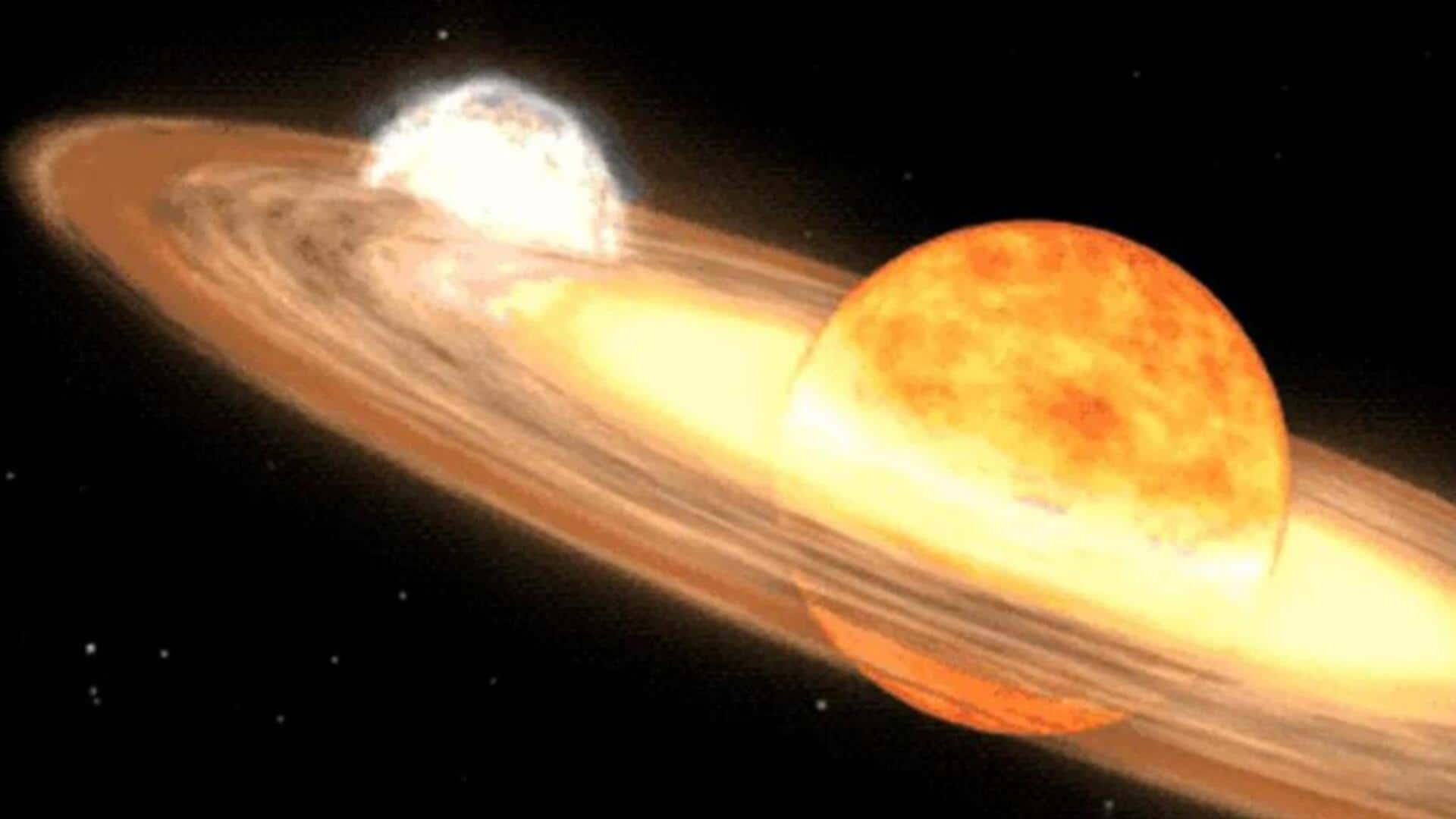
Once-in-a-lifetime: Exploding star 3,000 light-years away will be visible here
What's the story
In a rare cosmic event, the star system called T Coronae Borealis or Blaze Star, 3,000 light-years away from Earth, is due for a nova explosion.
The stellar event happens once every 80 years and lasts for about a week.
Louisiana State University astronomer Bradley Schaefer predicts that "T Coronae Borealis will erupt any night now, any month now."
The explosion will make it appear as a new star in our night sky.
Conditions
What's the reason behind the explosion?
T Coronae Borealis, also known as "T CrB," is a binary star system consisting of a white dwarf and an ancient red giant.
The red giant is losing hydrogen under the gravitational pull of its companion, which collects around it.
This accumulation of hydrogen builds pressure and heat, resulting in a thermonuclear explosion that can be seen from Earth.
Cosmic spectacle
Blaze Star's brightness and visibility
During the explosion, the Blaze Star will shine thousands of times brighter than it originally is.
To observers on Earth, it will look like a new star in the sky, as bright as Polaris, the North Star.
NASA astronomer Dr. Rebekah Hounsell called this event "a once-in-a-lifetime event that will create a lot of new astronomers out there."
Viewing guide
How to spot the nova explosion?
To catch a glimpse of the Blaze Star, one should look toward the Northern Crown, a parabola-shaped constellation west of Hercules.
A straight line drawn from Arcturus and Vega, two of the brightest stars in our hemisphere, will guide observers to Hercules.
However, NASA astrophysicist Koji Mukai warns that "recurrent novae are unpredictable," meaning it could stray from its predicted pattern.